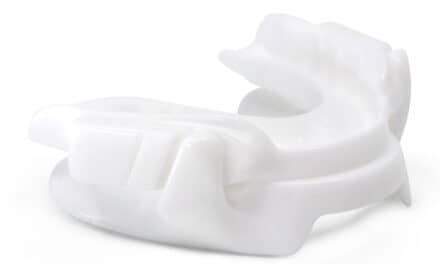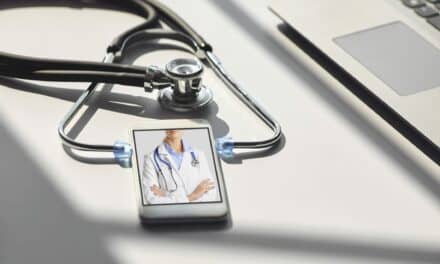CPT codes released in January 2022 have implications for sleep software that scales remote physiologic monitoring treatment management.
By Sree Roy
Remote patient monitoring (RPM) software can give sleep medicine businesses a competitive edge. It can reduce labor costs, improve sleep patient device use, and optimize user satisfaction. Sleep practices have not historically banked on being reimbursed for their remote patient monitoring services, however.
In January 2022, the Centers for Medicare & Medicaid Services (CMS) released four Current Procedural Terminology (CPT) codes that update the billing and reimbursement of remote patient monitoring. These codes—99453, 99454, 99457, and 99458—crack the door open for sleep software that facilitates remote patient monitoring to become integrated into reimbursable services.
To be clear, the CPT codes are used only for the level of service and engagement around remote patient monitoring, not on the actual use of software, says Larissa D’Andrea, VP of government affairs at ResMed. She says clinicians still need codes that reimburse for time spent remotely monitoring and analyzing physiologic data while performing services covered by existing CPT codes, as well as making patient decisions based on that data.
But the release of the four primary CPT codes has allowed for clinical staff time under general supervision, a change has opened up remote patient monitoring as an excellent solution for payors, providers, and patients, says sleep specialist Edward Mezerhane, MD, FAASM, FACP, CEO of sleep software company MonitAir LLC. “Our software was developed with RPM in mind and has all of the necessary features to meet the RPM requirements and enable the provider to scale the service within their practice,” Mezerhane says, noting features such as automatic time logging, a communication center, and comprehensive monthly reporting.
Earlier CPT codes, such as 99091 (which added a payment pathway for remote patient monitoring in 2018), only counted time by the physician/qualified healthcare provider. “The provider spending that much time with each patient was impractical,” Mezerhane says. “The allowance for general supervision of clinical staff under newer codes like 99457 has made remote patient monitoring a feasible solution for longitudinal patient care.”
99457, along with 99458 (a supplemental code for more than 40 minutes per month), covers remote physiologic monitoring treatment management, while 99453 covers setup and patient instruction on the use of their medical device, and 99454 covers device monitoring of physiologic parameters.
“A medical device is required for reimbursement of the 99454 code and for the automated collection of data required to conduct the professional services outlined in the 99457 code,” says Mezerhane. “In the case of MonitAir, it is registered with the FDA as a class 1 Medical Device Data System and is considered software as a medical device. We have seen providers, payors, and patients benefit from RPM services provided using MonitAir.”
MonitAir seeks to expand its focus this year into CPT codes for remote therapeutic monitoring (RTM), chronic care management, and complex chronic care management, Mezerhane adds.
Andrew Plourde, head of product at sleep and respiratory software as a service maker Somnoware, says, “As reimbursement changes so is the realization that RPM/RTM is the way of the future. This mindset is increasing adoption of software that supports RPM/RTM….We don’t foresee any hindrance, only opportunity, with our existing platform, related to billing or the emergence of new RPM/RTM codes.”
The COVID-19 pandemic accelerated the emergence of new remote patient monitoring codes. “With RPM reimbursement specifically, we have preliminary utilization data that shows a steep increase in the use of those services during the public health emergency (PHE),” says ResMed’s D’Andrea. “This is a true indication of how often these solutions would and should be utilized for the sake of patients’ health and wellbeing. Those numbers likely subside when the PHE winds down, but we’re confident they’ll remain higher than before the PHE in part because patients, clinicians, and payors are more accustomed to these solutions and see their value.”
But, she adds, “challenges in adoption persist, including prioritizing integration and interoperability with electronic health records, as well as creating financial incentives. Any relevant successful software in this space must contribute to driving health outcomes and reducing healthcare costs.”
At MonitAir, the company is in the early stages of evaluating changes in patient compliance for those enrolled in remote patient monitoring versus those undergoing the standard model of care. “We regularly speak to our legal counsel regarding the successes and frustrations of providers that are impacted by the current RPM reimbursement model, which is then communicated in aggregate to CMS for future decisions,” Mezerhane says.
ResMed, too, is an advocate for greater medical software reimbursement, both for solutions that enable remote and self-monitoring of sleep and respiratory care patients and those that optimize providers’ operational and clinical efficiency.
Somnoware’s Plourde says, “Software being paired with the right devices is becoming a critical component to the operational execution. Middleware platforms like Somnoware enable physicians to centralize data and get a complete picture of patients’ overall health. Aggregated data sets help support application of new diagnostic codes for digital health initiatives (RPM/RTM) that help improve outcomes.”
Representatives of sleep software makers tell us they hope reimbursement will continue to modernize to reflect pandemic-related changes in patient utilization and to anticipate how the digital health ecosystem will evolve.
“Today there is a limitation on the 99454 code, which only allows for reimbursement to one provider regardless of the number of medical devices that the patient is using for care,” Mezerhane says. “We would like to see this code reimbursable per device, not per patient.”
D’Andrea says, “Ideally five years from now, CMS will be operating under a new payment methodology that pays for software as a medical device (SaMD). This could be for Medicare Part B physician payments where software as a medical device would qualify as Direct PE [practice expense] or as a specific SaMD benefit category. These technologies should be construed as medical equipment, medical supply, and in some instances, even replace some of the work typically assigned to clinical staff.
“Medical technologies, ResMed’s included, are moving to where work is being performed by machines—whether assistive, augmentative, or autonomous. We need coding, coverage, and payment policies to keep pace with those advancements.”
Photo 33119900 © Tmcphotos | Dreamstime.com





